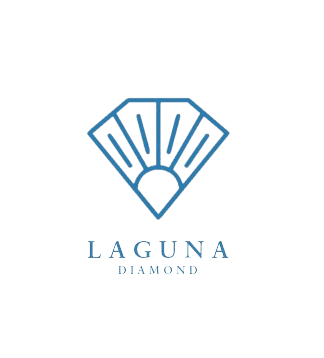FREQUENTLY ASKED QUESTIONS (FAQ)
Please contact us if you have any questions.
What are the differences between a natural and lab diamond?
Lab-grown diamonds, also known as synthetic diamonds or cultured diamonds, are diamonds that are created in a laboratory setting using various high-pressure, high-temperature (HPHT) or chemical vapor deposition (CVD) processes. Natural diamonds, on the other hand, are formed deep within the Earth’s mantle over billions of years through natural geological processes.
Here are some key points of comparison between lab-grown diamonds and natural diamonds:
1. Origin: Lab-grown diamonds are created in a controlled laboratory environment, while natural diamonds are mined from the Earth’s crust.
2. Composition: Both lab-grown and natural diamonds have the same chemical composition, which is pure carbon. They possess identical crystal structure and physical properties.
3. Appearance: Lab-grown diamonds have the same visual and optical properties as natural diamonds. They exhibit the same brilliance, sparkle, and clarity characteristics. Gemological experts usually require specialized equipment to differentiate between lab-grown and natural diamonds.
4. Cost: Lab-grown diamonds are typically less expensive than natural diamonds. The production process for lab-grown diamonds can be more controlled and predictable, resulting in lower production costs compared to the challenges associated with mining natural diamonds.
5. Ethics and Environmental Impact: The mining of natural diamonds can have significant environmental and social consequences, such as habitat destruction and human rights concerns in some regions. Lab-grown diamonds, on the other hand, have a lower environmental impact and are considered a more ethical choice for those concerned about sustainability and social responsibility.
6. Rarity and Perceived Value: Natural diamonds are inherently rare and have a long history of being associated with luxury and high value. Some individuals place a higher sentimental or symbolic value on natural diamonds due to their rarity and traditional significance. However, the perception of lab-grown diamonds is evolving, and they are gaining acceptance in the market.
Ultimately, the choice between lab-grown and natural diamonds depends on personal preferences, budget, ethical considerations, and the significance one places on the natural origin of a diamond. Both types have their own unique advantages and appeal, so it’s a matter of individual preference when making a purchasing decision.
What is the difference between HPHT and CVD lab grown diamonds?
HPHT (High-Pressure High-Temperature) and CVD (Chemical Vapor Deposition) are two different methods used to create synthetic diamonds. Both processes aim to replicate the conditions under which natural diamonds are formed, but they differ in the way they achieve this.
HPHT Diamonds:
HPHT diamonds are created by subjecting a diamond seed to high pressure and high temperature. The process involves placing a diamond seed (a small piece of natural diamond) in a press and applying intense pressure, typically in the range of 5-6 GigaPascals, and high temperatures of around 1,500-1,600 degrees Celsius. The pressure and temperature help dissolve carbon in a molten metal solvent, allowing the carbon atoms to precipitate and form a new diamond around the seed.
Advantages of HPHT Diamonds:
1. Natural diamond-like properties: HPHT diamonds possess similar optical and physical properties to natural diamonds. They have the same crystal structure, hardness, and brilliance.
2. Larger sizes: HPHT process allows for the growth of larger diamonds compared to CVD.
3. Lower cost: HPHT diamonds are generally less expensive to produce compared to CVD diamonds.
Disadvantages of HPHT Diamonds:
1. Limited color range: HPHT diamonds are commonly produced in fancy colors, including yellow, brown, and black. The production of colorless or near-colorless HPHT diamonds is challenging and expensive.
2. Visible growth features: Some HPHT diamonds may have visible growth features or internal strain lines due to the manufacturing process.
CVD Diamonds:
CVD diamonds are created using a different process known as chemical vapor deposition. This method involves placing a carbon-rich gas (usually methane) in a chamber along with a diamond seed. The gas is ionized, creating plasma, and the carbon atoms in the plasma are deposited on the diamond seed, layer by layer, to grow a synthetic diamond.
Advantages of CVD Diamonds:
1. Color variety: CVD diamonds can be produced in a wide range of colors, including colorless and near-colorless.
2. Clarity control: CVD process allows for better control over the diamond’s clarity, as it is grown layer by layer. This results in fewer internal flaws compared to some HPHT diamonds.
3. Eco-friendly: CVD diamonds have a lower environmental impact compared to HPHT diamonds, as the process does not require as much energy or produce as much waste.
Disadvantages of CVD Diamonds:
1. Lower hardness: CVD diamonds can have slightly lower hardness compared to natural and HPHT diamonds, although they are still relatively durable.
2. Smaller sizes: CVD diamonds are typically grown in smaller sizes compared to HPHT diamonds.
In summary, both HPHT and CVD diamonds are synthetic diamonds created through different processes. HPHT diamonds offer natural diamond-like properties and are known for larger sizes, while CVD diamonds provide a wider color variety and better clarity control. The choice between HPHT and CVD diamonds ultimately depends on personal preferences, budget, and the specific requirements of the buyer.
Do you offer authentication for your diamonds?
Yes, all of our diamonds are hand selected for our clients to ensure the highest quality possible. We only provide GIA certified diamonds. With current GIA authentication, natural stones are provided with both a paper and online certificate. Lab diamonds are provided with a online certificate.
